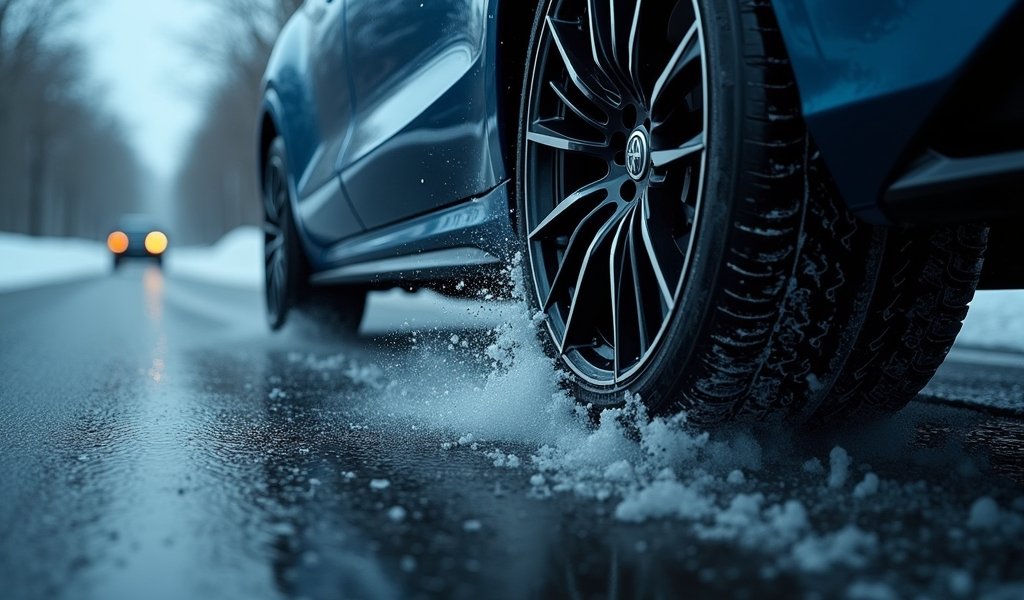Overview
The article provides a detailed guide on traction control system calibration, explaining how these systems work to maintain vehicle stability, signs of miscalibration, and both DIY and professional calibration solutions. It emphasizes that proper calibration is crucial for safety and optimal vehicle performance, with recommendations for regular maintenance to prevent issues and insights into advanced traction control technologies.
Table of Contents
- Understanding Traction Control Systems
- Why Calibration Matters
- Signs Your Traction Control System Needs Calibration
- DIY Calibration Tips for Your Traction Control System
- When to Seek Professional Calibration
- Maintenance Tips to Prevent Calibration Issues
- Technology Advancements in Traction Control Systems
- Conclusion
- Frequently Asked Questions
Understanding Traction Control Systems
Let’s talk about traction control system calibration in a way that won’t make your eyes glaze over. Think of your car’s traction control system (TCS) as that friend who grabs your arm when you’re about to slip on ice – it’s there to keep you steady when things get slippery.
At its core, a traction control system monitors your wheels through speed sensors. When one wheel starts spinning faster than the others (hello, patch of ice!), the system jumps into action. It might apply the brake to that wheel or reduce engine power – sometimes both – to help you maintain control. Pretty neat, right?
Modern traction control systems work hand-in-hand with your vehicle’s Electronic Stability Control (ESC) and Anti-lock Braking System (ABS). Together, they form a safety trio that keeps your car planted on the road when conditions get dicey. According to the National Highway Traffic Safety Administration, these systems have significantly reduced single-vehicle crashes and rollovers.
But here’s the thing – like any sophisticated system, your TCS needs proper calibration to work its magic. It’s similar to how ECU remapping software needs precision tuning for optimal performance. When your traction control is perfectly calibrated, it’s like having an invisible co-pilot who knows exactly when to step in – and when to let you do your thing.
Why Calibration Matters
You wouldn’t wear shoes two sizes too big, right? Similarly, your traction control system needs to be properly “fitted” to your vehicle through calibration. This isn’t just mechanic jargon – it makes a real-world difference in how your car performs.
Proper traction control system calibration ensures your vehicle responds appropriately to road conditions. Too sensitive, and you’ll feel the system engaging when it’s not needed (that annoying power cut just when you’re trying to merge). Not sensitive enough, and you might find yourself sliding when the system should have stepped in.
Calibration becomes even more crucial after certain modifications or repairs. If you’ve installed new tires with a different diameter, changed your suspension height, or had transmission work done, your traction control system might be working with outdated information. It’s like trying to navigate with an old map – you’re bound to make some wrong turns.
Many drivers don’t realize that weather extremes can also affect calibration. In regions with dramatic seasonal changes, your system might perform differently as temperatures swing from scorching summers to freezing winters. A well-calibrated system adjusts for these variables, giving you consistent performance year-round.

Signs Your Traction Control System Needs Calibration
Sometimes your car talks to you – not literally (unless you’ve got one of those fancy AI systems), but through subtle cues that something’s not quite right. Here are the tell-tale signs your traction control system is crying out for calibration:
- The traction control light has a mind of its own – blinking or staying on when roads are perfectly dry
- Your vehicle hesitates or jerks during gentle acceleration on normal roads
- You notice inconsistent braking or unexpected brake engagement
- The system seems overly aggressive, cutting power when you’re just trying to get up a slight incline
- Alternatively, the system seems asleep on the job, not engaging when roads are clearly slippery
One particularly frustrating sign is when your vehicle doesn’t perform consistently in similar conditions. Maybe yesterday it handled that rainy corner perfectly, but today it’s slipping all over the place. This inconsistency often points to calibration issues.
If you’ve recently had work done on your suspension, transmission, or installed new tires, pay special attention to how your traction control performs. Changes to these systems can throw off your TCS calibration faster than a teenager changes their mind about their favorite song.
Oddly enough, poor fuel economy can also indicate traction control problems. When the system engages unnecessarily, it creates inefficiencies that show up at the pump. If your gas mileage has mysteriously dropped and you can’t figure out why, your TCS might be the culprit.
DIY Calibration Tips for Your Traction Control System
While some calibration work requires professional equipment, there are several DIY steps you can take to improve your traction control system performance. I’m not suggesting you become an overnight TCS expert, but these practical tips might save you a trip to the mechanic.
First things first – reset the system. This is often as simple as disconnecting your car battery for about 15 minutes (though check your owner’s manual first). This forces your vehicle’s computer to reset and can clear minor calibration issues. Just remember that resetting will also clear other settings like your radio presets and clock, so have those handy before you start.
Next, check your tire pressure. I can’t stress this enough – proper inflation is crucial for traction control calibration. Your TCS relies on wheel speed sensors, and uneven tire pressure can create false readings. Keep all tires at the manufacturer’s recommended PSI, which you’ll find on a sticker inside your driver’s door jamb.
For more tech-savvy DIYers, consider investing in a smart car diagnostic tool. These nifty devices plug into your OBD-II port and can read specific TCS trouble codes, giving you insights into what’s happening with your system. Some even offer basic recalibration functions for certain vehicle models.
Here’s a simple calibration routine that works for many vehicles:
- Find an empty parking lot or quiet road where you can drive safely without traffic
- With the engine running and the car in park, turn the steering wheel all the way to the left, then all the way to the right
- Drive forward in a straight line at about 5 mph for approximately 50 feet
- Make a figure-8 pattern at low speed
- Come to a complete stop, then accelerate moderately to about 20 mph
- Brake normally to a complete stop
This sequence helps your vehicle’s computer gather fresh data about steering angles, wheel speeds, and brake response. It’s particularly useful after battery disconnection or sensor replacement.
If you’ve recently modified your suspension or changed tire sizes, you might need to adjust your vehicle’s wheel speed sensor values. However, this typically requires dealer-level equipment or specialized software. In these cases, DIY has its limits, and you’ll likely need professional assistance.
When to Seek Professional Calibration
As much as I love a good DIY project, there are times when it’s best to leave traction control system calibration to the pros. Let’s be real – some aspects of modern vehicle electronics are simply beyond the average home mechanic’s toolkit.
After major repairs or modifications, professional calibration is usually necessary. This includes transmission replacement, ABS system repairs, or significant suspension alterations. These changes fundamentally affect how your vehicle moves and responds, requiring comprehensive recalibration of multiple integrated systems.
If your vehicle has an advanced driver assistance system (ADAS) that works with the traction control – like adaptive cruise control – professional calibration becomes even more important. These systems use complex algorithms and multiple sensors that must work in perfect harmony.
Professional calibration typically involves these steps:
- Diagnostic scanning to identify specific calibration issues
- Software updates from the manufacturer
- Sensor alignment using specialized equipment
- Road testing under various conditions
- Final adjustments based on vehicle performance
When selecting a shop for calibration work, choose one with manufacturer-specific experience. A technician who specializes in your vehicle brand will have access to the correct procedures and software. The ASE-certified technicians database can help you locate qualified professionals in your area.
Expect to pay between $75-200 for basic traction control calibration, though costs can increase for vehicles with more complex systems. While this might seem steep, consider it an investment in both safety and preventing more expensive problems down the road.

Maintenance Tips to Prevent Calibration Issues
The best way to deal with traction control calibration problems is to prevent them in the first place. A few simple maintenance habits can keep your system running smoothly and reduce the need for frequent recalibration.
Keep your wheel speed sensors clean and functional. These little devices are the eyes and ears of your traction control system, and they can get gunked up with road debris, brake dust, and other contaminants. During routine maintenance, ask your mechanic to inspect and clean these sensors – or learn to do it yourself with some electrical contact cleaner and a soft brush.
Maintain consistent tire conditions across all four wheels. This means identical tire models, similar tread wear, and equal inflation pressures. Your traction control system expects all wheels to behave similarly; when they don’t, it can trigger false activations or fail to engage when needed.
Here’s a maintenance schedule to keep your traction control system calibration in top shape:
- Monthly: Check tire pressures and visual inspection for damage
- Quarterly: Rotate tires to ensure even wear
- Bi-annually: Clean wheel speed sensors (more often in snowy/muddy regions)
- Annually: Professional scan for TCS error codes, even if no warning lights are present
- After significant service: Request TCS check following suspension, brake, or tire work
Pay special attention to your brake system. Many people don’t realize that traction control and ABS share components, so brake problems can affect TCS performance. Regular brake fluid flushes (typically every 2-3 years) help maintain proper hydraulic pressure for both systems.
Finally, don’t ignore those warning lights! If your TCS light illuminates, don’t just assume it’s a false alarm. Get it checked promptly before a minor calibration issue becomes a major (and expensive) repair.
Technology Advancements in Traction Control Systems
Traction control has come a long way since its introduction in the 1970s. Today’s systems are smarter, faster, and more integrated than ever before – which means calibration has become both more important and more sophisticated.
Modern vehicles use multi-axis accelerometers and gyroscopic sensors to detect vehicle movement in all directions. This allows the traction control system to anticipate stability issues before they become noticeable to the driver. These advanced sensors require precise calibration to interpret subtle motion changes correctly.
Artificial intelligence is entering the traction control space, with systems that learn your driving habits and adapt accordingly. Some high-end vehicles now feature AI-driven traction control that can distinguish between aggressive driving and actual traction loss, providing customized intervention based on your personal driving style.
Terrain-recognition technology is another exciting advancement. Modern SUVs and trucks often include terrain-specific traction control modes that adjust calibration on the fly. Whether you’re rock crawling, plowing through snow, or navigating sand, these systems recalibrate automatically for optimal performance. Research by SAE International shows these adaptive systems significantly improve off-road capability while maintaining on-road safety.
Vehicle-to-vehicle (V2V) communication is beginning to influence traction control calibration as well. When enabled, your vehicle can receive road condition information from other vehicles ahead of you, allowing your TCS to pre-calibrate before you reach slippery sections. This technology is still emerging but promises to revolutionize how traction control systems anticipate and respond to changing road conditions.
As electric vehicles become more common, we’re seeing specialized traction control systems designed for their unique power delivery characteristics. The instant torque of electric motors requires differently calibrated traction management, with some EVs able to adjust power to individual wheels in milliseconds for unprecedented traction control.
Conclusion
Proper traction control system calibration isn’t just mechanic mumbo-jumbo – it’s a crucial aspect of your vehicle’s performance and safety system. Whether you’re dealing with rain-slicked highways, snowy mountain passes, or just your daily commute, a well-calibrated TCS is working silently in the background to keep you safe and your drive smooth.
We’ve covered the signs of miscalibration, DIY tips for minor adjustments, when to seek professional help, and how to prevent calibration issues through proper maintenance. Remember that today’s increasingly sophisticated traction control systems require more attention to calibration than older vehicles, but they also provide significantly improved safety and performance when properly maintained.
Don’t wait for warning lights or slippery situations to think about your traction control system. Make calibration checks part of your regular maintenance routine, especially after any work that affects your vehicle’s suspension, tires, or braking system. Your future self will thank you – probably while confidently navigating through that unexpected rainstorm or snow flurry.
After all, the best traction control system is one you never notice because it’s doing its job perfectly, keeping you planted on the road and helping you reach your destination safely regardless of what Mother Nature throws your way.
Frequently Asked Questions
How often should I calibrate my traction control system?
Most vehicles should have their traction control system checked annually or after any suspension, tire, or brake work. Regular maintenance helps prevent issues before they affect vehicle performance and safety.
Can I drive with the traction control light on?
While you can physically drive with the TCS light on, it indicates your safety system is compromised or disabled. Only continue driving if absolutely necessary and with extreme caution in adverse conditions.
Does traction control calibration affect fuel economy?
Yes, a poorly calibrated system may engage unnecessarily, causing power interruptions that reduce fuel efficiency. Proper calibration ensures the system only activates when genuinely needed.
Will changing tire size affect my traction control calibration?
Absolutely – tire diameter directly affects wheel speed sensor readings. Any significant change in tire size requires TCS recalibration to ensure proper function.
Is traction control calibration covered under warranty?
Basic calibration issues are typically covered under most new vehicle warranties if they result from manufacturing defects. Calibration needed after modifications or accidents usually isn’t covered.


Pingback: Steering Wheel Position Sensor: 5 Fixes - knowsyourcar.com